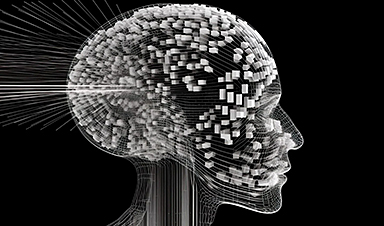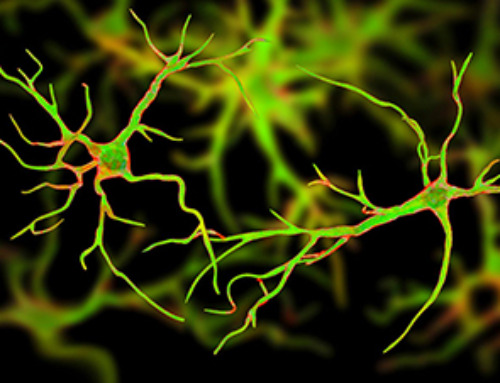The brain, despite its comparatively shallow structure with limited layers, operates efficiently, whereas modern AI systems are characterized by deep architectures with numerous layers. This raises the question: Can brain-inspired shallow architectures rival the performance of deep architectures, and if so, what are the fundamental mechanisms that enable this?
Neural network learning methods are inspired by the brain's functioning, yet there are fundamental differences between how the brain learns and how deep learning operates. A key distinction lies in the number of layers each employs.
Deep learning systems often have many layers, sometimes extending into the hundreds, which allows them to effectively learn complex classification tasks. In contrast, the human brain has a much simpler structure with far fewer layers. Despite its relatively shallow architecture and the slower, noisier nature of its processes, the brain is remarkably adept at handling complex classification tasks efficiently.
Research on Shallow Learning Mechanisms in the Brain
The key question driving new research is the possible mechanism underlying the brain's efficient shallow learning — one that enables it to perform classification tasks with the same accuracy as deep learning. In an article published in Physica A, researchers from Bar-Ilan University in Israel show how such shallow learning mechanisms can compete with deep learning.
Credit: Prof. Ido Kanter, Bar-Ilan University
"Instead of a deep architecture, like a skyscraper, the brain consists of a wide shallow architecture, more like a very wide building with only very few floors," said Prof. Ido Kanter, of Bar-Ilan's Department of Physics and Gonda (Goldschmied) Multidisciplinary Brain Research Center, who led the research.
"The capability to correctly classify objects increases where the architecture becomes deeper, with more layers. In contrast, the brain's shallow mechanism indicates that a wider network better classifies objects," said Ronit Gross, an undergraduate student and one of the key contributors to this work.
"Wider and higher architectures represent two complementary mechanisms," she added. Nevertheless, the realization of very wide shallow architectures, imitating the brain's dynamics, requires a shift in the properties of advanced GPU technology, which is capable of accelerating deep architecture, but fails in the implementation of wide shallow ones.
Reference: "Efficient shallow learning mechanism as an alternative to deep learning" by Ofek Tevet, Ronit D. Gross, Shiri Hodassman, Tal Rogachevsky, Yarden Tzach, Yuval Meir and Ido Kanter, 11 January 2024, Physica A: Statistical Mechanics and its Applications.
DOI: 10.1016/j.physa.2024.129513
News
New skin-permeable polymer delivers insulin without needles
A breakthrough zwitterionic polymer slips through the skin’s toughest barriers, carrying insulin deep into tissue and normalizing blood sugar, offering patients a painless alternative to daily injections. A recent study published in the journal Nature examines [...]
Multifunctional Nanogels: A Breakthrough in Antibacterial Strategies
Antibiotic resistance is a growing concern - from human health to crop survival. A new study successfully uses nanogels to target and almost entirely inhibit the bacteria P. Aeruginosa. Recently published in Angewandte Chemie, the study [...]
Nanoflowers rejuvenate old and damaged human cells by replacing their mitochondria
Biomedical researchers at Texas A&M University may have discovered a way to stop or even reverse the decline of cellular energy production—a finding that could have revolutionary effects across medicine. Dr. Akhilesh K. Gaharwar [...]
The Stunning New Push to Protect the Invisible 99% of Life
Scientists worldwide have joined forces to build the first-ever roadmap for conserving Earth’s vast invisible majority—microbes. Their new IUCN Specialist Group reframes conservation by elevating microbial life to the same urgency as plants and [...]
Scientists Find a Way to Help the Brain Clear Alzheimer’s Plaques Naturally
Scientists have discovered that the brain may have a built-in way to fight Alzheimer’s. By activating a protein called Sox9, researchers were able to switch on star-shaped brain cells known as astrocytes and turn them into [...]
Vision can be rebooted in adults with amblyopia, study suggests
Temporarily anesthetizing the retina briefly reverts the activity of the visual system to that observed in early development and enables growth of responses to the amblyopic eye, new research shows. In the common vision [...]
Ultrasound-activated Nanoparticles Kill Liver Cancer and Activate Immune System
A new ultrasound-guided nanotherapy wipes out liver tumors while training the immune system to keep them from coming back. The study, published in Nano Today, introduces a biodegradable nanoparticle system that combines sonodynamic therapy and cell [...]
Magnetic nanoparticles that successfully navigate complex blood vessels may be ready for clinical trials
Every year, 12 million people worldwide suffer a stroke; many die or are permanently impaired. Currently, drugs are administered to dissolve the thrombus that blocks the blood vessel. These drugs spread throughout the entire [...]
Reviving Exhausted T Cells Sparks Powerful Cancer Tumor Elimination
Scientists have discovered how tumors secretly drain the energy from T cells—the immune system’s main cancer fighters—and how blocking that process can bring them back to life. The team found that cancer cells use [...]
Very low LDL-cholesterol correlates to fewer heart problems after stroke
Brigham and Women's Hospital's TIMI Study Group reports that in patients with prior ischemic stroke, very low achieved LDL-cholesterol correlated with fewer major adverse cardiovascular events and fewer recurrent strokes, without an apparent increase [...]
“Great Unified Microscope” Reveals Hidden Micro and Nano Worlds Inside Living Cells
University of Tokyo researchers have created a powerful new microscope that captures both forward- and back-scattered light at once, letting scientists see everything from large cell structures to tiny nanoscale particles in a single shot. Researchers [...]
Breakthrough Alzheimer’s Drug Has a Hidden Problem
Researchers in Japan found that although the Alzheimer’s drug lecanemab successfully removes amyloid plaques from the brain, it does not restore the brain’s waste-clearing system within the first few months of treatment. The study suggests that [...]
Concerning New Research Reveals Colon Cancer Is Skyrocketing in Adults Under 50
Colorectal cancer is striking younger adults at alarming rates, driven by lifestyle and genetic factors. Colorectal cancer (CRC) develops when abnormal cells grow uncontrollably in the colon or rectum, forming tumors that can eventually [...]
Scientists Discover a Natural, Non-Addictive Way To Block Pain That Could Replace Opioids
Scientists have discovered that the body can naturally dull pain through its own localized “benzodiazepine-like” peptides. A groundbreaking study led by a University of Leeds scientist has unveiled new insights into how the body manages pain, [...]
GLP-1 Drugs Like Ozempic Work, but New Research Reveals a Major Catch
Three new Cochrane reviews find evidence that GLP-1 drugs lead to clinically meaningful weight loss, though industry-funded studies raise concerns. Three new reviews from Cochrane have found that GLP-1 medications can lead to significant [...]
How a Palm-Sized Laser Could Change Medicine and Manufacturing
Researchers have developed an innovative and versatile system designed for a new generation of short-pulse lasers. Lasers that produce extremely short bursts of light are known for their remarkable precision, making them indispensable tools [...]





















